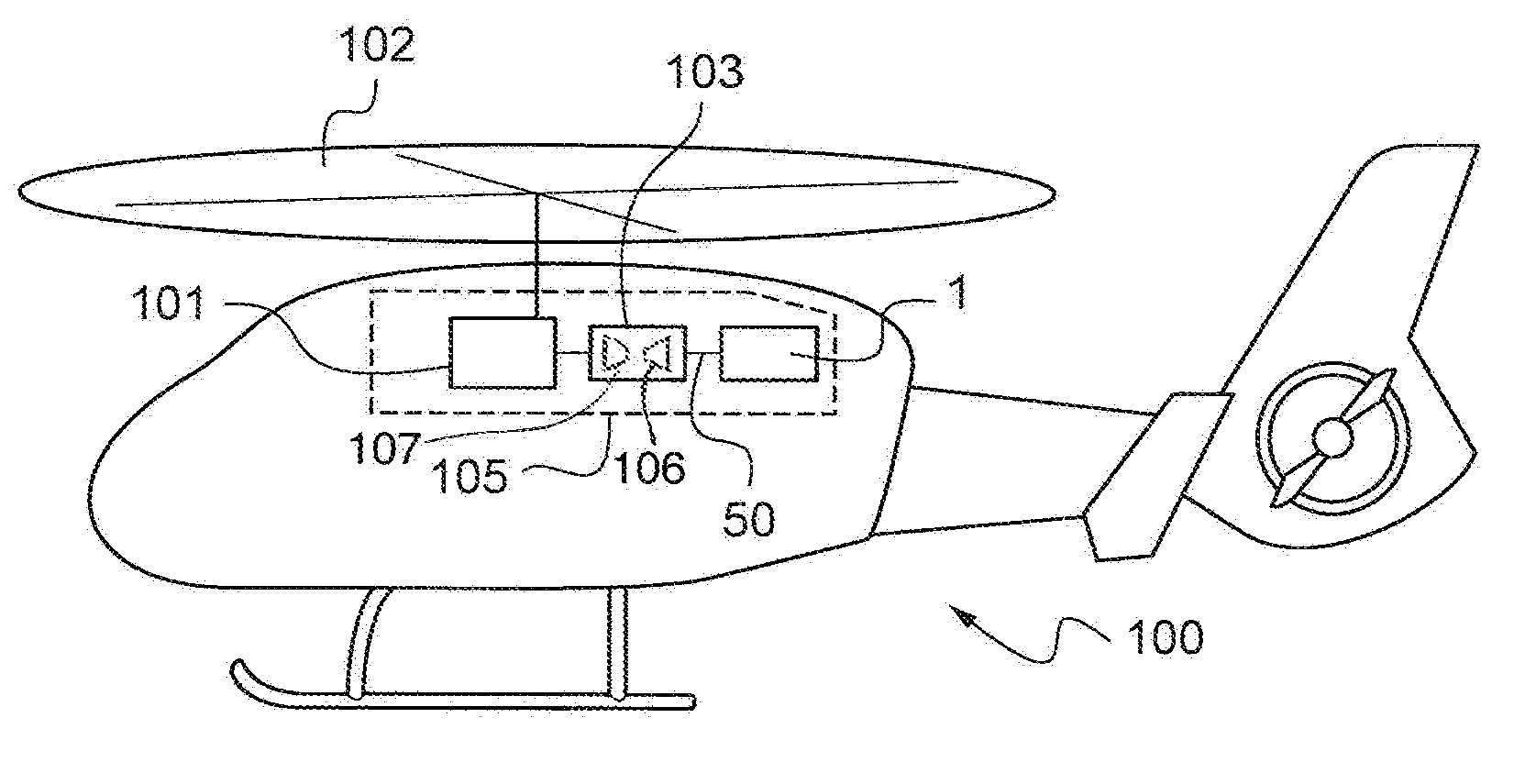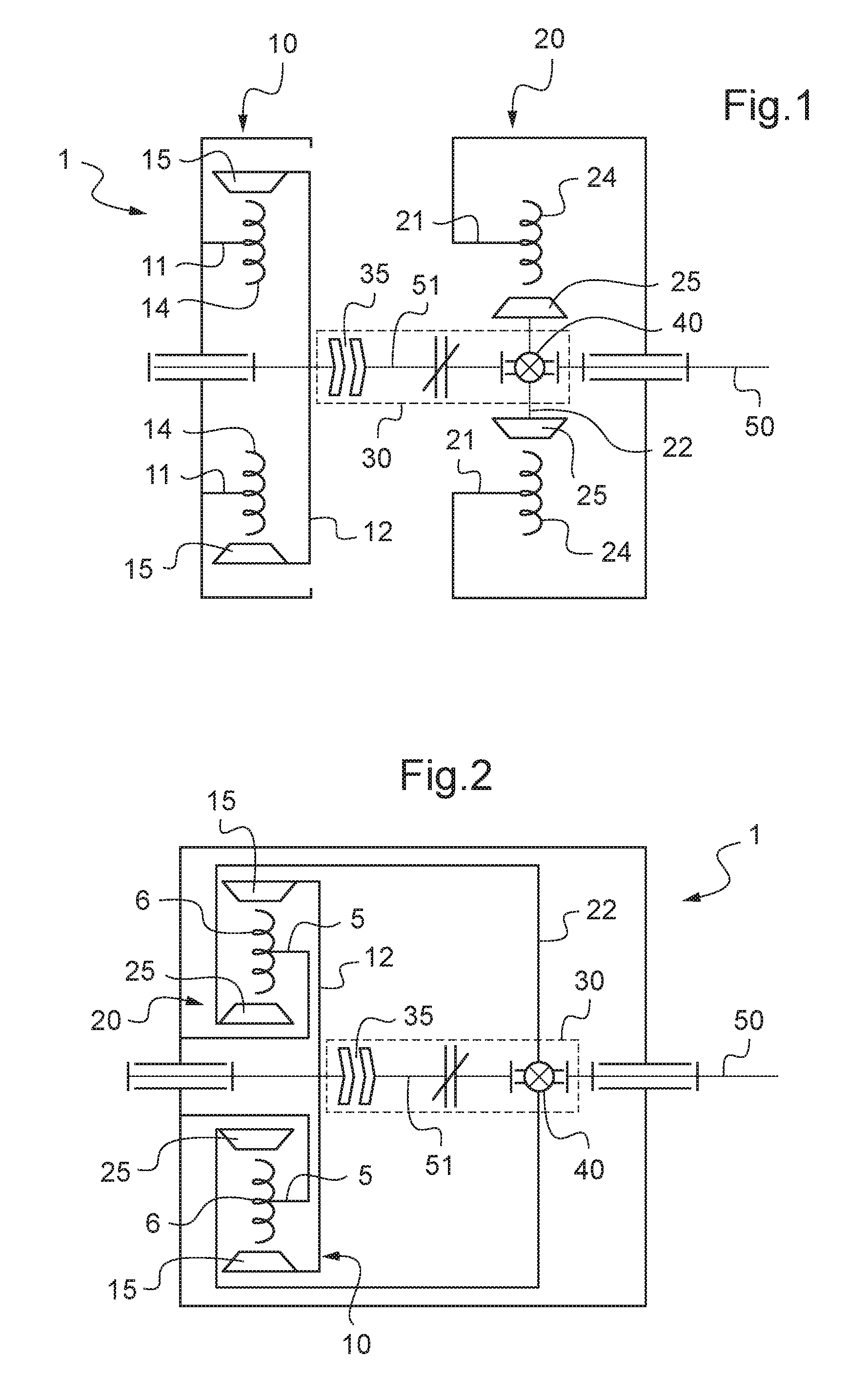Reversible electrical machine for an aircraft
a rotary wing aircraft and electrical machine technology, applied in the field of electric machines, can solve the problems of requiring maintenance on the electrical machine more frequently, affecting efficiency, and affecting the operation of the electric machin
- Summary
- Abstract
- Description
- Claims
- Application Information
AI Technical Summary
Benefits of technology
Problems solved by technology
Method used
Image
Examples
Embodiment Construction
[0108]FIG. 1 shows an embodiment of a reversible electrical machine 1 of the invention having a first electrical device 10, a second electrical device 20, first disengageable coupling means 30, and an outlet shaft 50. The first device 10 is a motor and has a first rotor 12 co-operating with a first stator 11. Likewise, the second device 20 has a second rotor 22 co-operating with a second stator 21, however this second device is a motor-generator. Each stator 11, 21 is provided with non-permanent magnets 14, 24 made up of one or more windings of conductor wires serving to generate at least one stator magnetic field when passing an electric current. Each rotor 12, 22 is provided with permanent magnets 15, 25 generating respective first and second rotor magnetic fields.
[0109]In FIG. 1, as in all of the figures, the non-permanent magnets 14, 24 and the permanent magnets 15, 25 are oriented radially relative to the axis of rotation of each rotor 12, 22, thus enabling the magnetic flux to...
PUM
 Login to View More
Login to View More Abstract
Description
Claims
Application Information
 Login to View More
Login to View More - R&D
- Intellectual Property
- Life Sciences
- Materials
- Tech Scout
- Unparalleled Data Quality
- Higher Quality Content
- 60% Fewer Hallucinations
Browse by: Latest US Patents, China's latest patents, Technical Efficacy Thesaurus, Application Domain, Technology Topic, Popular Technical Reports.
© 2025 PatSnap. All rights reserved.Legal|Privacy policy|Modern Slavery Act Transparency Statement|Sitemap|About US| Contact US: help@patsnap.com



